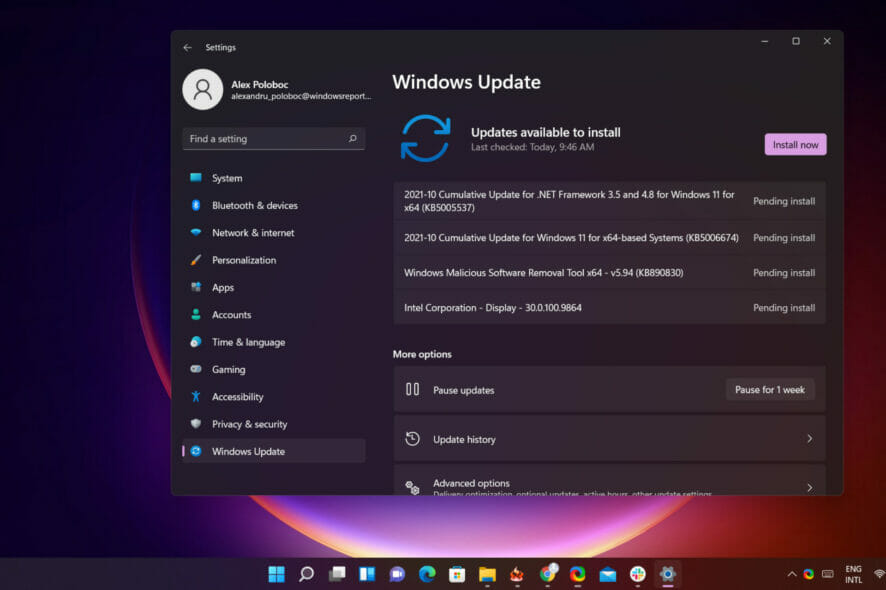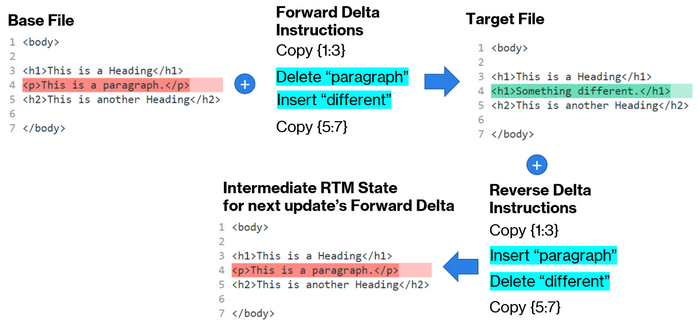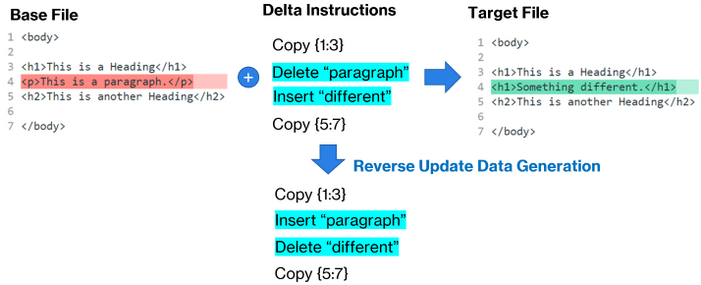Redmond officials explain how Windows 11 updates are 40% smaller
4 min. read
Updated on
Read our disclosure page to find out how can you help Windows Report sustain the editorial team Read more
Key notes
- The Redmond tech giant decided to reveal the secret behind its smaller Windows 11 updates.
- Windows 10 versions 1809 and above, use paired forward and reverse differential compression.
- This ensures that the OS can revert to its base version as an intermediate state while servicing.
- Check out this interesting article and take a peek behind Microsoft's curtain, see how they do it.

As we all know, Windows 11 received its first Patch Tuesday Update a few hours ago, and although it’s not a huge update, considering the OS just started rolling out generally in a staggered manner over a week ago.
This recent update fixes just some compatibility issues, seemingly without introducing any new ones.
But, if you still felt that the update installed on your PC quicker than you expected, Microsoft has now provided more insight into what made this possible.
Let’s find out together what this is all about, shall we?
This is how Microsoft makes updates smaller
Just before we dive in on what’s changed in Windows 11’s servicing model, it’s important to discuss the motivation behind the change as well as the existing servicing model.
We can all agree that Windows is an operating system that is used in a variety of environments all over the globe.
More so in this hybrid environment where everyone may not have access to the fastest internet connections but still need to remain protected through security patches.
This is why it’s essential that patches are small in size, especially since monthly cumulative updates contain all previously released fixes.
Versions 1809 and above, of Windows 10, use paired forward and reverse differential compression described in the diagram above.
This actually ensures that the OS can revert to its base version as an intermediate state while servicing. As you may notice, while the forward and reverse differentials are symmetric, they feature very different content.
The Redmond-based tech company doesn’t use a bidirectional delta because some transforms and patches may delete the data that is needed for a reverse delta.
For a non-destructive transform to be ensured, a reverse delta would first need to store the content added and deleted by the forward delta.
Due to the disjoint in content, the process would not be very efficient, at least when compared to paired forward and reverse differential compression.
Microsoft has really changed this process in Windows 11 using an approach called reverse update data generation.
The mapping works by running a byte-by-byte disassembly of the program’s assembly code and identifying the virtual addresses. Virtual addresses correspond logically to entry points for assembly code functions and shift when the assembly code is updated with a fix. These shifts are observed by the delta engine and are captured by a mapping table. The mapping process on delta apply normalizes the addresses of these changes and is a large part of the reason of why modern architecturally enlightened delta algorithms are so efficient.
Seemingly a simple and intuitive approach, it observes the delta instructions and then reverses them directly without going through the paired delta reverse pass.
On the backend, however, this constitutes a significant backend change that uses a mapping table to map the resultant changes in assembly code functions.
Much like the basic patching instructions, these transforms can be “observed” and reversed. There is a slight overhead as not all mappings are 1:1, and where forward mapping conflicts with its observed reverse mapping, additional patch instruction must be used to align the mapping. This can be done in-place, and the reverse mapping will provide nearly the same performance as a reverse delta with a direct mapping from a delta generation done on the server.
Redmond officials claim that its reverse update data generation approach has resulted in a 40% reduction in the size of Windows 11 updates.
The Redmond company says that it also filed for a patent for this methodology a few months ago. It remains to be seen whether Microsoft will backport this technique to Windows 10 as well.
Intrigued by these reduction techniques? Share your opinion with us in the comments section below.











